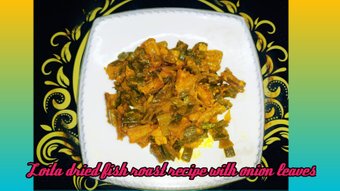Birefringence in rainbows and resin
4
About :
As I began my run tonight, I spied, beneath stormy clouds, a rainbow. Red; orange; yellow; green; blue; indigo; violet - the usual suspects were all there. However, these sparse few hues are just a subset of the continuous spectrum of colours that make up visible light. On either side of that little band of light, there’s a whole range of colours that we cannot distinguish with the naked eye.
 Rainbow over Newhaven, Edinburgh
Rainbow over Newhaven, Edinburgh
This got me thinking back to a lecture hosted by Dutch astrophysicist Walter Lewin, dubbed “the hidden beauty of rainbows”. I’ll post a link to the recording below. Lewin is renowned for his contributions to physics education. A handful of the topics he explores include explanations of optical phenomena, electricity and magnetism, vibrations and waves, classical mechanics... He’s brilliant – witty, relatable – he brings a certain allure to the world of physics. I think… that the shadow cast by the sexual harassment allegations against him in 2014 tarnished his reputation and raised important questions about accountability in academia. Why he felt the need to victimise at least ten women I will never understand… I suppose ego and power derail even the greatest of minds. But despite this controversy, Lewin's contributions to physics education remain significant, inspiring countless students and enthusiasts alike.
"The Hidden Beauty of Rainbows" > sourceAs I ran, my mind wandered to occasions resembling the apparent "colour shifts" frequently noticed in varnishes on paintings. And I suppose this is what led me to write today’s article. My aim is to hopefully dispel the common misconception among those that attribute a painting’s colour change solely to degrading pigments...
The colour change I will write about tonight is often attributed to a phenomenon called "birefringence". Birefringence occurs when light passes through a material and is split into two rays, each traveling at a different speed. When these rays recombine, they can interfere with each other, resulting in changes in colour or intensity. In the case of varnishes, this phenomenon can cause the appearance of a yellow or brown tint over time.
 ”Comparison of positive and negative birefringence : In positive birefringence (figure 1), the ordinary ray (p-polarisation in this case w.r.t. magenta-coloured plane of incidence), perpendicular to optic axis A is the fast ray (F) while the extraordinary ray (s-polarisation in this case and parallel to optic axis A) is the slow ray (S). In negative birefringence (figure 2), it is the reverse.” > source
”Comparison of positive and negative birefringence : In positive birefringence (figure 1), the ordinary ray (p-polarisation in this case w.r.t. magenta-coloured plane of incidence), perpendicular to optic axis A is the fast ray (F) while the extraordinary ray (s-polarisation in this case and parallel to optic axis A) is the slow ray (S). In negative birefringence (figure 2), it is the reverse.” > source
Now, comparing this to the angles of incidence in a rainbow involves understanding the optical properties of both phenomena. I’ll be honest - I've watched Lewin’s lecture over and over again and still can't wholly grasp the physics behind it. There was a time when I relied on my partner's exceptional gift for explaining complex concepts. He had a remarkable talent for unraveling intricate problems with such clarity, especially for someone like me, who is very much the novice... Physics isn’t my strong suit and requires a little more brainpower than the average “rabbit hole” I find myself plunging into, haha, but I’ll try my best to explain why it is I’ve decided to compare water to resin. (Stay with me – we’re getting there, haha!)
A rainbow is formed by the dispersion, refraction, and reflection of light within water droplets in the atmosphere. So, light enters a water droplet and is refracted. It is then reflected by the back of the droplet. As this reflected light leaves the droplet, it is refracted again, at multiple angles. It is pretty phenomenal when you think about it. The colours of the rainbow are a result of different wavelengths of light being refracted at slightly different angles, creating the characteristic arc we see in moody skies, in light fogs, in the spray of sea at the tip of a stern, in waterfalls – yet it is an optical illusion, it does not exactly exist in a specific spot. A rainbow is the stuff of dreams.
 Light prism, Sint Pauluskerk in Vaals
Light prism, Sint Pauluskerk in Vaals
In both cases, the interaction of light with a medium (varnish or water droplets) is crucial. Just as the birefringence in varnishes can alter the colour of light passing through them, the refraction and dispersion of light in water droplets create the spectrum of colours in a rainbow. And when you remove that varnish… viola.





Of course, I’ve oversimplified the chemistry and physics a little bit – the mechanisms at play are different: birefringence primarily affects the polarisation and phase of light passing through a material, while the formation of a rainbow relies on the refraction and dispersion of light due to its passage through water droplets. But both phenomena involve the manipulation of light. And although the specific mechanisms and causes of colour change differ between varnish birefringence and the formation of rainbows, a similar idea persists... they are linked by illusion.
A varnish acts as a reversible form of protection for a painting, shielding it from dust, dirt, pollutants, impact, abrasion. Any filling and retouching of losses to the surface layers are applied between isolation layers of varnish, and these are also stripped from the painting’s surface during varnish removal – in case you were aghast at the amount of damage exposed in some of the images above. I think people forget that some paintings have lived several lives over. They accrue the wear and tear any living or inanimate thing accumulates over a lifetime...
The end goal is, obviously, to prolong the painting’s life – its colours and surface texture. A varnish, when first applied, saturates the colours of a painting in order to enhance the richness of an artist’s palette. It involves a meticulous understanding of resin chemistry, solvent selection, pH considerations, and application techniques.
Resins, whether natural or synthetic, form a film. The purpose of solvents is to dissolve the resin and facilitate application, proper drying, and adhesion. Additives, like cosmoloid (a wax) or tinuvin (a light stabiliser) modify the resin properties.


 From wax infusions to adhesive pastes, the toolkit for working with the surface layers of a painting includes a variety of non-invasive examination methods such as ultraviolet light analysis and testing gels for varnish removal.
From wax infusions to adhesive pastes, the toolkit for working with the surface layers of a painting includes a variety of non-invasive examination methods such as ultraviolet light analysis and testing gels for varnish removal.
To sum it up, the purpose of varnish, much like a rainbow, is aesthetics. But, unlike a rainbow, resin has a physical lifespan that can last +/- 100y. As with anything in time, a varnish degrades. It desaturates. It imbibes the dirt and dust and pollutants in the air around it. It oxidises, it destabilises. In essence, it dies. And then it is safely, ethically, farewelled, removed, and replaced.
And thus ends today’s musings. Apologies if I went on a bit - rather enthusiastic about light. There are more sensible ways to discuss things like varnish and rainbows, but... helaas. If you made it this far, well done, seriously.
Now, I release you.
Think about the beauty of birefringence.
Look out for angles of incidence.
Admire a painting.
Disclaimer
Blogger: @actaylor
Photographs: unless otherwise noted, all images were taken by me with an iPhone 8
Tags :
Their limit for today is $0!




















Comments:
Reply:
To comment on this video please connect a HIVE account to your profile: Connect HIVE Account